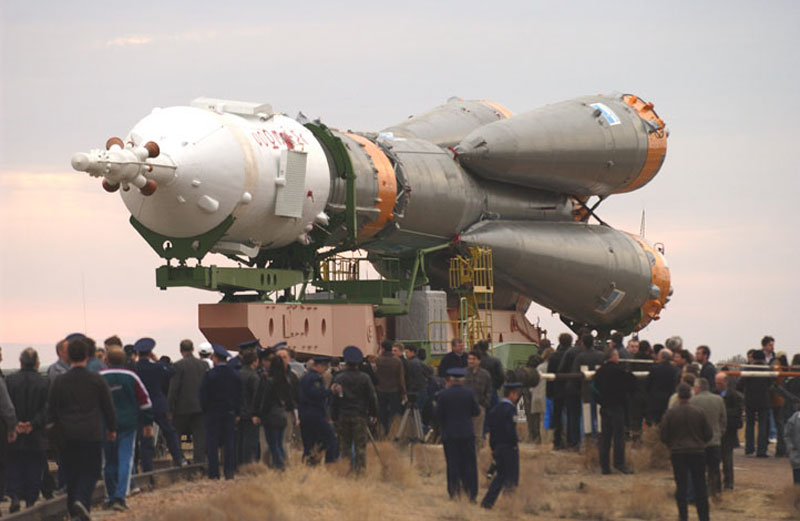Credit & Copyright: Scott Andrews,
NASA
Explanation:
It takes a big rocket to go into space.
In 2003 April, this
huge Russian rocket
was launched toward Earth-orbiting
International Space Station (ISS),
carrying two astronauts who will make up the new Expedition 7 crew.
Seen here during rollout at the Baikonur Cosmodrome, the rocket's white top is actually the
Soyuz TMA-2, the most recent version of the
longest serving type of human spacecraft.
The base is a
Russian
R7 rocket, originally developed as a prototype
Intercontinental Ballistic Missile in 1957.
The
rocket spans the width of a football field and
has a fueled mass of about half a million kilograms.
Russian rockets like this remain a primary transportation system to the
International Space Station (ISS).
Last week, a similar rocket
successfully launched a
spaceflight participant
and two
Expedition 12 astronauts to the space station.
1999 2000 2001 2002 2003 2004 2005 2006 2007 2008 2009 2010 2011 2012 2013 2014 2015 2016 2017 2018 2019 2020 2021 2022 2023 2024 2025 |
Yanvar' Fevral' Mart Aprel' Mai Iyun' Iyul' Avgust Sentyabr' Oktyabr' Noyabr' Dekabr' |
NASA Web Site Statements, Warnings, and Disclaimers
NASA Official: Jay Norris. Specific rights apply.
A service of: LHEA at NASA / GSFC
& Michigan Tech. U.
|
Publikacii s klyuchevymi slovami:
Soyuz - ISS - rocket - kosmicheskie korabli - kosmicheskaya stanciya - raketnaya tehnika - rakety - Soyuz
Publikacii so slovami: Soyuz - ISS - rocket - kosmicheskie korabli - kosmicheskaya stanciya - raketnaya tehnika - rakety - Soyuz | |
Sm. takzhe:
Vse publikacii na tu zhe temu >> | |
